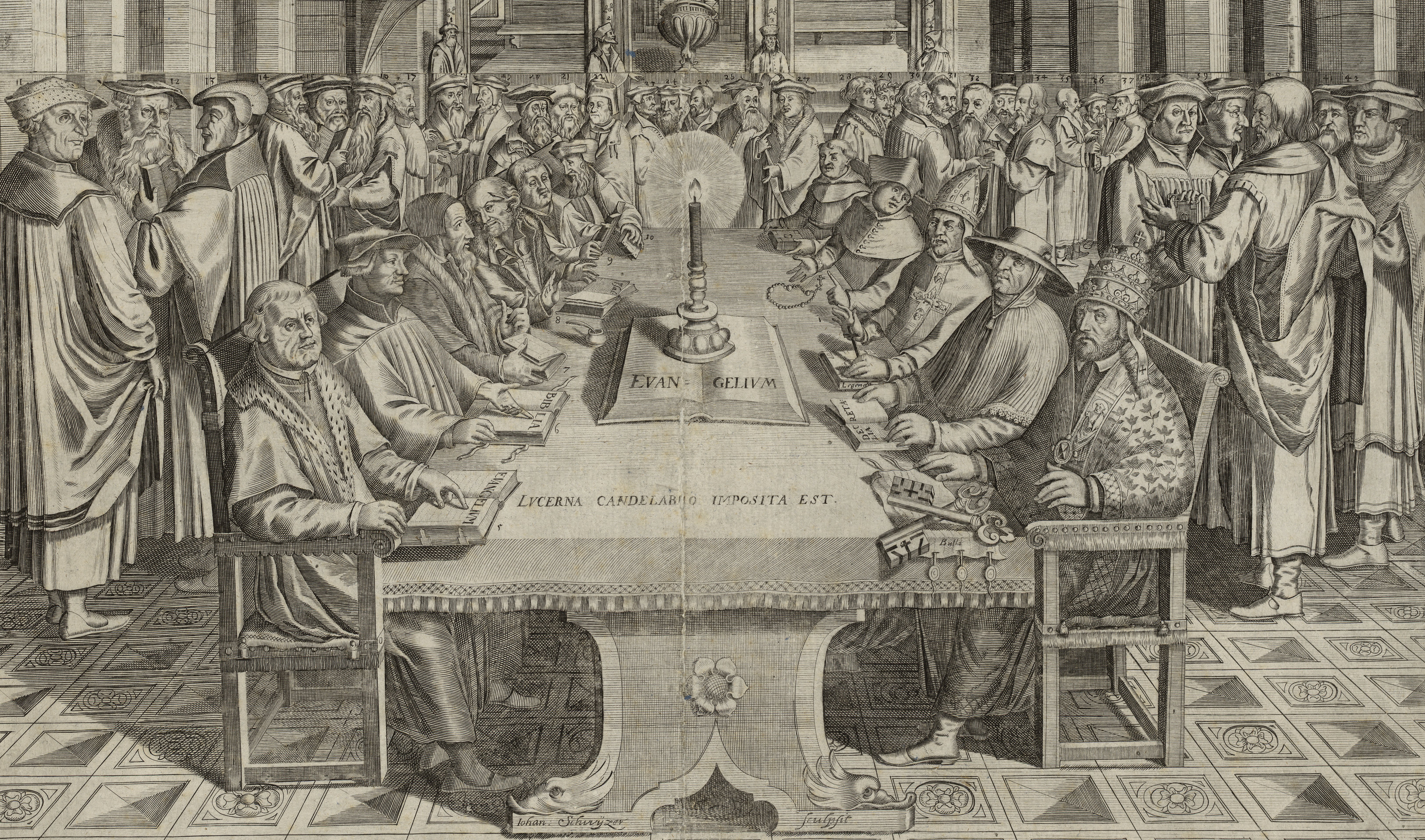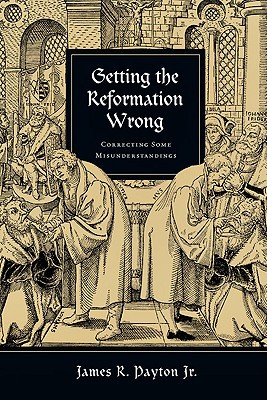Review: Getting the Reformation Wrong

“According to Luther, reason had given Christian teaching “the French pox” (i.e., syphilis) and Aristotle was the pimp who had arranged the tryst.” (p. 197)
A capable and impressively comprehensive treatment of the Protestant Reformation, including the historical movements perched above and below its moment in Western development. James Payton, Jr. is a professor of history who specializes in Reformation era scholarship. In this handy distillation Payton addresses some of the common misreadings of the Reformation — its ideas, its context, its trajectories — that so abundantly reside along the shoals of modern Protestantism. In doing so, he strays far from overlaying any private credo onto its retelling, choosing to maintain a stringently historical focus throughout. That is to say, even though his tome is published under the evangelical churning mill, InterVarsity Press, Payton pulls no punches and does not confine his inquiry to what today’s Protestants might wish to hear.
This is the Reformation laid bare, warts and all, its triumphs as well as its tragedies. Indeed, a deeper excavation of this historical era may generate friction for those operating under the illusion that the Reformation was a monolithic, amicable waltz of Christian revelation and renewal. Getting the Reformation Wrong: Correcting Some Misunderstandings knocks down this wobbly edifice and erects in its place the multivalent presentation uncovered by historical scholarship in recent decades. It isn’t until the final chapter that Payton swaps his historian attire for his self-confessed Protestant chapeau and offers some speculative wisdom on how Protestant Christendom may move forward in the face of some 30,000+ denominations and splinter sects extant.
Contextual Inevitability
The first misconception to which he lays waste is the notion that Martin Luther’s ideas fell from heaven, as it were, sans historical context and ideological precedence. In fact, the clarion call for reformation within Western Christendom had been sounded for decades leading up to Luther’s decisive act at Wittenburg. Longstanding corruption and profligacy within the Roman papacy and enfolding dioceses during the Late Middle Ages had provoked deep resentment from the outlying communities.
The rancor reached a fever pitch during the late 14th through the early 15th centuries in what became known as the Western Schism: Church governance devolved to an embarrassing state of disarray as quarrels over who had rights to the Roman throne only brought ignominy to the institution. The Medieval Period’s Black Death, moreover, which rent the peoples of Europe and shaved its populaton by some 60-75 percent between the years 1347 and 1450, combined with religion’s complete impotence to abate this paroxysm, further depleted the waning confidence in the Church. The siren of reformatio in capite et membris — “reform in head and members” — blared loudly, with anticlericalism a prevalent current at the front of European consciousness.
Mind you this was not an ideological opposition to religion writ large but rather a vehement disapproval of the rank venality in which the Roman communion was now awash. Christians of all stripes, from the Late Middle Ages to the Renaissance into which it bled, yearned for an overhaul of the Christian faith — a return to form. The groundwork for the Reformation had been laid atop a societal substrate eager to receive new ideas and leadership.
The Renaissance Revisited
A second misconstruction Payton targets is the idea that the Renaissance and the Protestant Reformation were antithetical responses to the shared grievances toward the Church. The Renaissance, it is often supposed, was fundamentally irreligious and, ergo, anticipated the Enlightenment that was to come, while the Reformation was by contrast a recrudescence of spiritual wisdom. Payton traces these misconceptions largely to the 19th century Swiss historian Jacob Burckhardt, who published a number of works characterizing the Renaissance as a humanistic, or human-centered, movement as opposed to a religious one. This view carried weight for several centuries and was eventually revealed by later scholarship as a false dichotomy.
Scholarship has now shown that the term “humanist” as used in Renaissance literature carried no philosophical implications whatsoever but simply meant someone who taught the liberal arts or “humanities”. It was in fact anachronistic of Burckhardt and his confreres to retroject their contemporary understanding of humanism onto a cultural epoch with an entirely different vernacular. The prevailing view today is one that sees the Renaissance as foregoing scholasticism and dialectic theological training for more individual concerns, such as poetry, grammar, history, and art.
While anti-papal sentiments were indeed widespread in Renaissance rhetoric, it was not a development centered on skepticism of religion as later interpreters have often presumed. Renaissance awareness aspired to a different balance between religion and culture, but embodied no hard-lined philosophical valence at its root. In this way, the Renaissance had far greater familial connection to the coming Reformation than to the Enlightenment of the 17th and 18th centuries.
The Question of Unity
Perhaps the gravest of misconstruals about the Reformation is that Luther’s thinking followed a fixed, undeviating path from the moment he proclaimed his new way forward to the moment he died, or likewise, that the Reformers were all united in their ideas for reform. Like everyone else, Martin Luther was human and, as such, saw a shift in his thinking over time. Nor did the Reformers all share a similar background. Some of the major players were versed in Northern Christian humanism, while others were steeped in scholastic pedagogy, and this led to different emphases, foci, and clarities.
Trained in the scholastic mode of theology, Luther initially hit upon his revelatory approach to the Christian faith after some emotionally trying times during his monastic life. Even so, he did not anticipate or envisage a worldwide reformation to spring out of his ideas. They did, of course, and once his ideas were released into the wild, others latched onto them, sometimes taking them in directions he vehemently opposed.
The ferocity and zeal with which Luther and his Reformer compeers and detractors quarreled over various doctrinal commitments must have been something to behold. It was a common tactic of Luther to declaim his opponents as minions of Satan who wished to distort the truth in service to the wicked one. Here is one instance of the depths of Luther’s discourtesy:
Or the inimitably endearing:1
Sola Fide
One of the moving targets of these colorful debates was Luther’s core idea: justification sola fide. Through his many devoted years in service to the monastic order without any emotional relief to show for it, Luther had touched upon the doctrine that salvation is grasped by faith alone. This reduction of the Christian scheme of salvation was deemed heretical by the Roman Church, who contested that such a radical view would lead to indifference or apathy toward good behavior. In defense, the Reformers were more or less united in their ecclesiastical response. They countered that faith is never solitary and that good works and virtuous deportment are a natural outworking of the belief in God’s unconditional mercy and plan for redemption. Faith is never alone but a package deal, they declared.
Sola Scriptura
The second delineating doctrine propounded by Luther and his contemporaries vectored around sola scriptura, which is often just as amenable to misinterpretation as that above. There is still to be found echoes of the “Scripture is good, tradition is bad” dichotomy nestled in modern Protestant thinking. A glance at the Reformers’ own words reveals this to be an unacceptably narrow contrast. What Luther and company advocated was ad fontes theology, a return “to the sources,” viz apostolic teaching and the writings of the Church fathers, something that had been muddled and all but smothered in the Christian life and teaching of the day.
Luther believed that much of the Christian doctrine of his time was unfaithful to Scripture as well as to the Church fathers’ interpretation of Scripture. He sought to revive these ancient sources and privilege their position in the hierarchy of religious authority over against Catholicism’s primary emphasis on tradition. While Luther and many of his loyalists argued that the Bible was the most important touchstone of Christian understanding, they did not insist it was the only hammer in the believers’ toolkit.
Closing Thoughts
I was overall very pleased with this book. Payton delivers on the task he set out to accomplish. He provides a historically focused synopsis of the Reformation, allowing the major voices to speak for themselves, and corrects along the way the sundry misconceptions operative among many Protestants today. The book is also fastidiously referenced, allowing readers to drill further into the source literature for clarification. I recommend this book to anyone interested in Church history and the roots of Protestantism.
Note: This review is mirrored over at Goodreads and at Amazon.
Feature image via Wikimedia Commons
- For a near-endless supply of Lutheran insults, see this online generator. [↩]



Comments